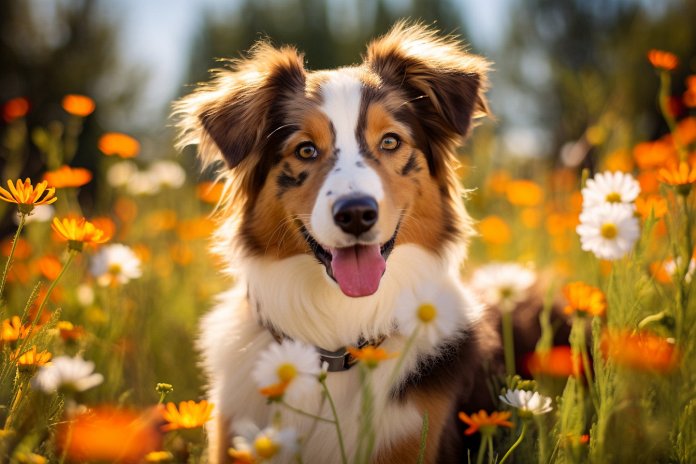
We all experience times when we feel annoyed with something or someone, and this is a natural human emotion. While you may not feel intense anger, you may feel despair, frustration, or annoyance towards a situation or person you dislike.
It’s important to remember that animals can also experience annoyance
, and there are many things you may do that can annoy your pet dog. There are various signs that can indicate your dog is annoyed with you or a particular situation.
Signs Your Dog May be Annoyed
When we get annoyed, we often display traits like rolling our eyes, storming off, ignoring someone, or speaking in a certain tone. Dogs also show signs of annoyance that are similar to those displayed by humans. For example, your dog may bare their teeth, flatten their ears, tuck their tail, growl, or even snap when they’re feeling annoyed.
Another thing your dog may do when annoyed is walk away from you. They may simply wander off mid-sentence if you’re telling them off for something. Dogs may even roll their eyes when annoyed, just like humans.
Some dogs may steer clear of you or give you a blank stare when they’re annoyed. If your dog smacks your leg or another part of your body, it may indicate their annoyance. They may be annoyed about something or want something but are fed up with being ignored by you.
The body language of an annoyed dog is also similar to humans in many ways. They may walk away, glare at you, look sulky or sheepish, and steer clear of you until they have calmed down. If you try to hug or cuddle your dog when they’re annoyed, they may pull away and march off, even if they’re usually receptive to affection.
There are other signs that may indicate your dog is feeling annoyed. Restlessness can be a sign of both boredom and annoyance. Your dog may pace or not respond when you call them.
Body Language
Signs to watch for if your dog is annoyed include:
– Staring
– Dropped ears
– Tail tucking
– Raised paw
Other Signs
Other signs that may mean your dog is annoyed are:
– Keeping away from you
– Not responding to you
– Walking away
– Rolling eyes
– Acting sheepish
History Behind Dogs Being Annoyed
Historically, dogs were used as working animals and were trained to work and obey regardless of the situation. However, as dogs have become more domesticated and an integral part of many families, they have started displaying certain behaviors. Interactions between humans and dogs have changed over the years, leading to dogs finding themselves in annoying situations more often.
Since becoming domesticated, dogs have had to tolerate human behavior from their owners. While they love certain things like playing, going for walks, being fed, and receiving love and affection, there are also things that annoy them. Dogs may feel annoyed when humans try to stare at them, ignore their needs, or show affection when they’re not in the mood for it.
Science Behind Dogs Feeling Annoyed
Researchers have identified various factors that can cause dogs to feel annoyed, just like humans. It’s important to differentiate between annoyance and aggression, as they are not the same. Annoyance in dogs is often a result of being fed up, bored, or frustrated, while aggression is a direct response to a specific event, such as a confrontation with another dog or being physically harmed. Common causes of annoyance in dogs include yelling, staring, hugging too tightly, and teasing.
Training Your Dog to Handle Their Annoyance
Teaching your dog not to get annoyed can be challenging and requires collaboration. To help your dog control their annoyance, you need to address the behavior or situation that triggers their annoyance. It’s essential not to get frustrated or angry with your dog if they show signs of annoyance, as this can escalate the problem and lead to outright aggression.
Enrolling your dog in obedience classes or providing proper obedience training at home can help control their frustration. Proper training reduces the likelihood of annoyance caused by tone of voice or unwanted commands. Early socialization is also crucial to help your dog get along with other animals and people, minimizing potential sources of annoyance in the future.
As a responsible dog owner, take the time to understand what annoys your dog. By identifying triggers, you can work on minimizing their exposure to situations or behaviors that make them feel this way.
“It’s important to remember that it is not just humans that can get annoyed – animals can also experience annoyance and there are many things that you do that may annoy your pet pooch.”

Tips & Things to Know
1️⃣ Just like humans, dogs can also experience annoyance towards certain situations or people. Signs your dog is annoyed could include baring their teeth, growling, walking away from you, and even giving you a blank stare. More subtle signs could be a sudden change in their behavior, acting restlessly or not responding when called.
2️⃣ The causes of annoyance in dogs could be various things such as yelling at them, hugging too tightly, staring at them, or teasing them. It’s important for dog owners to identify what specifically annoys their pet to avoid such behavior or situations.
3️⃣ Training is crucial in helping your dog handle their annoyances. Attending obedience classes or receiving proper obedience training at home can keep their frustration under control. Early socialization is also important to teach your dog to get along with other animals and people and prevent future annoyances.
Frequently Asked Questions, Answered ✅
1. What are some signs that indicate a dog is annoyed?
– Some signs that indicate a dog is annoyed include baring their teeth, putting their ears flat and tucking their tail. They may also growl, snap, walk away, roll their eyes, steer clear of you, or give you a paw-smack.
2. How is a dog’s body language similar to humans when they are annoyed?
– Dogs may display similar body language to humans when they are annoyed, such as walking away, glaring, looking sulky or sheepish, and avoiding physical affection. They may also become restless, pace, or not respond when called.
3. What are some common causes of annoyance in dogs?
– Common causes of annoyance in dogs include yelling, staring, hugging too tightly, and teasing. They may also be annoyed by being ignored or by an over-display of affection when they are not in the mood for it.
4. How can you train your dog to handle their annoyance?
– Training your dog to handle their annoyance requires working together and avoiding the behaviors or situations that trigger their annoyance. Proper obedience training and socialization can also help reduce annoyance. It’s important not to become frustrated or angry with your dog if they show signs of annoyance, as this can escalate the problem.
5. How can you reduce the risk of exposing your dog to situations that annoy them?
– As a responsible dog owner, it’s important to identify what specifically annoys your dog and work on reducing their exposure to those situations or behaviors. This may involve adjusting your own behavior or seeking professional help if needed.